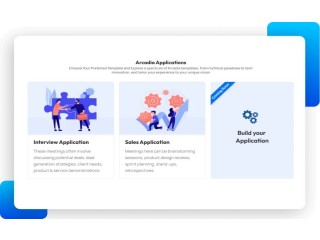Manually Resolve Data Issues in QuickBooks Professional
1 week ago Services Plano 26 viewsLocation: Plano
Price: $150
Manually resolving facts issues in QuickBooks may be crucial for preserving the integrity and accuracy of your economic facts. While tools like QuickBooks File Doctor can help automate the restore technique, there are instances wherein manual intervention is essential. Below, I’ll guide you thru numerous commonplace scenarios and steps for manually solving facts troubles in QuickBooks.
Verifying and Rebuilding Data
QuickBooks has built-in gear for verifying and rebuilding information, which could assist pick out and fix information integrity issues.
To verify data:
Open QuickBooks, visit the 'File' menu, then pick 'Utilities' and 'Verify Data'.
Let QuickBooks test for statistics problems. If troubles are discovered, you'll be induced to rebuild the facts.
To rebuild data:
Go back to the 'File' menu, pick 'Utilities', then 'Rebuild Data'.
Follow the prompts to create a backup, because the rebuild technique can modify records documents.
After the backup, QuickBooks will start the rebuilding process. Once finished, affirm the information again to make certain all troubles are resolved.
For a solution, check this link if you are experiencing QuickBooks Target Chaining Error
2. Fixing List Damages
Damages in your lists (customers, vendors, items) can cause operational issues in QuickBooks.
To manually repair lists:
Open the respective list (e.g., Customer Center, Vendor Center).
Look for entries that display unusual or incorrect information.
Verify each entry for correctness, and edit where necessary. You can do this by double-clicking on the entry and updating the required fields.
For duplicated entries or incorrect items, consider merging them. Right-click on the item you want to keep and select 'Edit'. Rename the incorrect item to match the correct one and save it. QuickBooks will prompt to merge them; confirm to proceed.
3. Dealing with Transaction Issues
Incorrect or duplicate transactions can lead to discrepancies in accounts.
To fix transaction issues:
Review recent transactions from the reports like the Audit Trail, which can help you spot duplicates or modifications.
Check the account registers for any anomalies in transactions. You can access this by going to the 'Lists' menu and selecting 'Chart of Accounts'. Double-click on the account to open the register.
If you find an erroneous transaction, either delete it or modify it as necessary. Ensure to take a backup before making significant changes.
4. Utilizing QuickBooks Tools Hub
For more advanced issues, the QuickBooks Tools Hub provides additional utilities like the Quick Fix my File and QuickBooks Program Diagnostic Tool.
To use the Tools Hub:
Download and install the QuickBooks Tools Hub from the Intuit website.
Run the application and navigate to the Program Problems tab if you’re experiencing frequent crashes or the Company File Issues tab for file-related problems.
Follow the on-screen instructions to resolve specific issues.
5. Consulting the QuickBooks Log Files and Windows Event Viewer
Sometimes, the underlying causes of data issues are recorded in the QuickBooks log files or the Windows Event Viewer.
Access the QuickBooks log file (QBWIN.LOG) by pressing F2 in QuickBooks, then F3, and going to the 'Open File' tab.
For Windows-related issues, open the Event Viewer by typing 'Event Viewer' in the Windows search and look under 'Windows Logs' -> 'Application'. This can provide clues especially when QuickBooks crashes or behaves unpredictably.
Conclusion
While automated tools can resolve many common issues, manually troubleshooting and fixing data discrepancies ensures that your QuickBooks data remains accurate and reliable. Regular backups and careful monitoring of the system’s performance are essential practices to avoid significant data integrity issues. If problems persist after manual attempts, it may be wise to consult with a QuickBooks professional for expert assistance.












